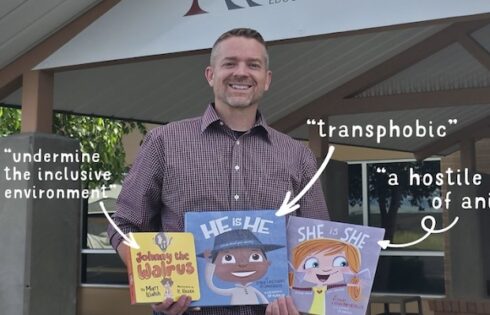
More academics in Canada are questioning a claim that some 200 Indigenous children had been buried in a mass grave at a British Columbia residential school.
Residential schools were established by the Canadian government in the 1880s to assimilate Indigenous children into Western culture. Unfortunately, these schools often forcibly took children from their parents and forbade any connection to Indigenous ways.
As reported by The Fix earlier this year, Canadian and American scholars had expressed skepticism about the mass grave in the town of Kamloops.
The British Columbia First Nation Band Tk’emlúps te Secwépemc had noted “We had a knowing in our community that we were able to verify. To our knowledge, these missing children are undocumented deaths,” the New York Post reported recently.
This “knowing” allegedly was supported by the work of University of the Fraser Valley’s Sarah Beaulieu, a “sessional instructor of social, cultural, & media studies.” Beaulieu used “ground-penetrating radar” to — supposedly — verify the existence of the buried bodies; however, all the scans revealed were “reflections,” various “anomalies” which might be children’s bodies.
 But then, as now, there still has been no exhumation to confirm these findings.
But then, as now, there still has been no exhumation to confirm these findings.
News of the alleged grave led to Canada lowering all flags to half-mast, billions of dollars in promises from the government for various programs, and an apology from Pope Francis (as churches largely administered the residential schools).
In July 2021, Beaulieu (pictured) wrote that her findings were “an example of science playing an affirming role of what the [Tk’emlúps te Secwépemc] Knowledge Keepers already recognized.”
Scholars pointed to defects in the story.
MORE: U. Washington panel explores ‘Indigenous perspectives in environmental justice’
Jacques Rouillard of the Université de Montréal noted that “not one body has been found […] after months of recrimination and denunciation, where are the remains of the children buried at the Kamloops Indian Residential School?” He also pointed out that Beaulieu herself had said the radar results were “based only on soil abnormalities that could easily be caused by root movements.”
The University of Calgary’s Tom Flanagan called the Kamloops mass grave “the biggest fake news story in Canadian history.”
An Indigenous university professor was similarly wary:
“I can understand why some people are skeptical about the Kamloops case,” [Eldon] Yellowhorn told The Post. “This is all very new. There’s a lot of misinformation floating out there. People are speaking from their emotions.”
As Yellowhorn sees it, the actual evidence for the mass grave at the Kamloops site is thin.
“All the radar shows you is that there are anomalies or reflections,” he said. “The only way to be certain is to peel back the earth and ascertain what lies beneath. We have not gotten to the point where we can do that. It’s a huge job.”
Academics also have questioned the “gospel” of claims that 150,000 Indigenous children had been forced into residential schools. Flanagan noted “a large percentage” of Indigenous parents freely chose the schools for their kids’ education.
Former Mount Royal University Professor Frances Widdowson said political correctness plays a big role in getting to the bottom of such stories as “no one dares question indigenous leaders in Canada these days.” She said “Knowledge Keepers […] cannot be questioned, because to do so would be perceived as ‘disrespectful.’”
Widdowson was fired earlier this year for disagreeing with Canada’s Truth and Reconciliation Commission regarding aspects of Indigenous “genocide.”
San Jose State University’s Elizabeth Weiss had told The Fix that “Frankly, most of this so-called ‘Native Children Genocide’ narrative looks like a political cudgel and a cash cow for social justice activists.”
Academics across the globe have claimed Indigenous “ways of knowing” are as legitimate as Western science. Ontario’s ninth grade math curriculum, for example, “honour[s] diverse mathematical ideas and thoughts, and incorporate[s] multiple ways of knowing and doing.” New Zealand scholars claim that the Maori “Mātauranga,” their knowledge system, is “not lesser to other knowledge systems.”
Indeed, the entire premise of universities’ so-called “decolonization” movements is to shift the focus away from Western-style inquiry.
MORE: Canadian schools burn and destroy books to appease indigenous population
IMAGES: Shutterstock.com, University of the Fraser Valley
Like The College Fix on Facebook / Follow us on Twitter






Please join the conversation about our stories on Facebook, Twitter, Instagram, Reddit, MeWe, Rumble, Gab, Minds and Gettr.